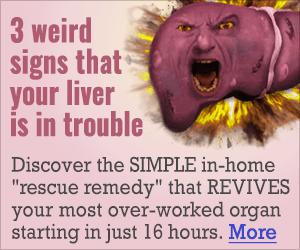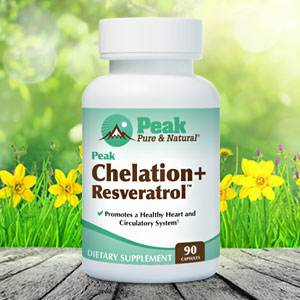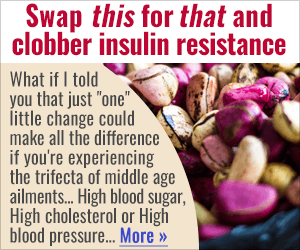Get Easy Health Digest™ in your inbox and don’t miss a thing when you subscribe today. Plus, get the free bonus report, Mother Nature’s Tips, Tricks and Remedies for Cholesterol, Blood Pressure & Blood Sugar as my way of saying welcome to the community!
How a common heavy metal can make pneumonia, flu and COVID-19 more severe

The COVID pandemic is in the rear-view mirror. However, we learned a great deal during that time…
Scientists at the University of Michigan, the University of Southern California and the University of Washington were interested in the link between COVID deaths and smokers.
That’s because a large percentage of the people dying from the coronavirus shared some characteristics: They were older males who smoked.
Some of these researchers had already conducted a comprehensive study on the impact of cadmium (a heavy metal found in cigarettes) on chronic diseases, including lung and cardiovascular diseases.
And since their studies showed that long-term exposure to cadmium — even at low levels — may undermine our defense system in the lungs, they theorized that cadmium could make it impossible for people to cope with viral attacks.
They also knew that cadmium isn’t just found in cigarettes. It also contaminates leafy veggies and other foods you would think would be healthy, like rice and cereal. So, they knew the risk could be huge if their theory was proven correct…
Cadmium linked to severe viral infection
Because, at the time, there was not a lot of data on COVID, they instead focused on studying the potential association of cadmium to other viral infections: influenza and pneumonia.
The researchers combed through data on nearly 16,000 participants (both smokers and non-smokers), comparing their cadmium levels to their risk of dying from a viral infection.
And here’s what they found…
After adjusting for all confounding factors like age, sex and race, the results showed that patients with cadmium levels in the 80th percentile were 15 percent more likely to die of influenza or pneumonia compared to those in the 20th percentile.
Related: A slow gait may be a sign of cadmium exposure
And for those who had never smoked, the difference was even greater, with a whopping 27 percent higher risk of death for those with high cadmium levels versus those in the 20th percentile.
In other words, too much cadmium in your body, regardless of how it got there, could be the reason a viral or respiratory infection becomes much more severe.
Ridding your body of cadmium
So how can you protect yourself from cadmium exposure that could turn a case of the flu deadly?
According to senior author Howard Hu, professor and chair of USC’s Department of Preventive Medicine and an occupational/environmental physician, the human body finds it much more difficult to excrete cadmium than other toxic metals.
However, chelation, an accepted method of removing heavy metals from the body, can be beneficial. Research studies have demonstrated that the detoxification of cadmium with EDTA — short for ethylenediaminetetraacetic acid — and other chelators is possible and therapeutically beneficial.
There are two ways EDTA is administered: intravenously in a health care setting or in supplement form. Chelators, like EDTA, bind to heavy metals and remove them from the body as waste in urine.
EDTA was first used as a treatment for lead exposure and poisoning. In medical studies, EDTA has been shown to be three times safer than common household vinegar. In fact, EDTA is so safe for humans, the American Heart Association recommends massive direct intravenous injections as a treatment for people who have been exposed to toxic levels of lead, mercury, aluminum and cadmium.
Cadmium in your diet
Lead author Sung Kyun Park, associate professor of epidemiology and environmental health sciences at the University of Michigan School of Public Health, suggests that everyone should be aware of the major sources of cadmium in their diets.
These include:
- Cereal
- Rice
- Organ meats such as liver and kidneys
- Soybeans
- Some types of leafy vegetables, especially lettuce and spinach
- Some potato varieties, such as sweet potatoes
- Other vegetables, including carrots, beets, eggplant and peas
However, the researchers are quick to say they are not recommending a major shift in lifestyle, since many of these foods are staples of a balanced and nutritious diet. They suggest considering other food sources, such as cruciferous vegetables like cabbage and broccoli, which contain high levels of antioxidants but relatively low levels of cadmium.
Eating broccoli may even help chelate some of the pollutants. A few years ago, Scientists at Johns Hopkins University, along with several Chinese researchers, discovered that a phytonutrient found in cruciferous vegetables, such as broccoli and Brussels sprouts, is key to chelating air pollutants from the body.
Cucumbers, snap beans and sweet corn are also good choices as they are considered “low cadmium accumulators.”
Editor’s note: Have you heard of EDTA chelation therapy? It was developed originally to remove lead and other contaminants, including heavy metals, from the body. Its uses now run the gamut from varicose veins to circulation. Click here to discover Chelation: Natural Miracle for Protecting Your Heart and Enhancing Your Health!
Sources:
METAL CONTAMINATION IN VEGETABLES – CADMIUM IS BECOMING A CONCERN — University of Delaware
New study links cadmium to more severe flu, pneumonia infections — EurekAlert!
Cadmium Toxicity and Treatment — The Scientific World Journal














